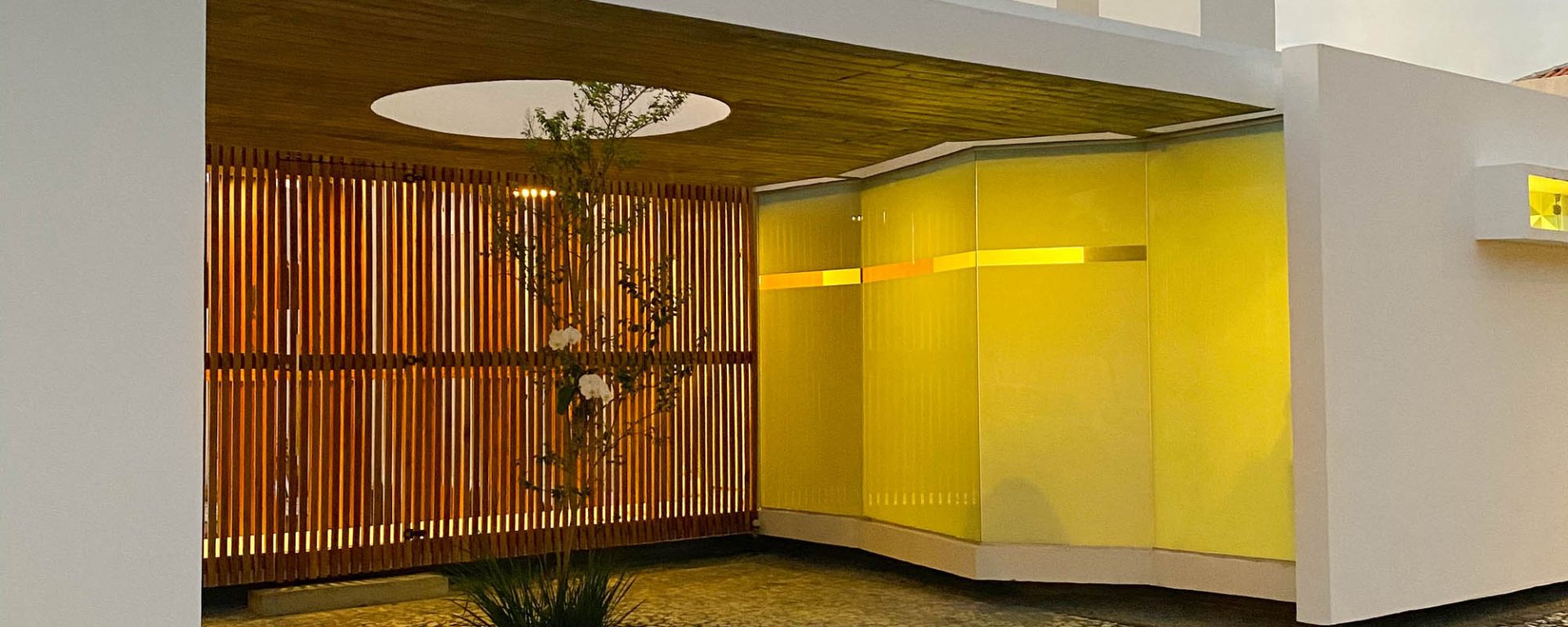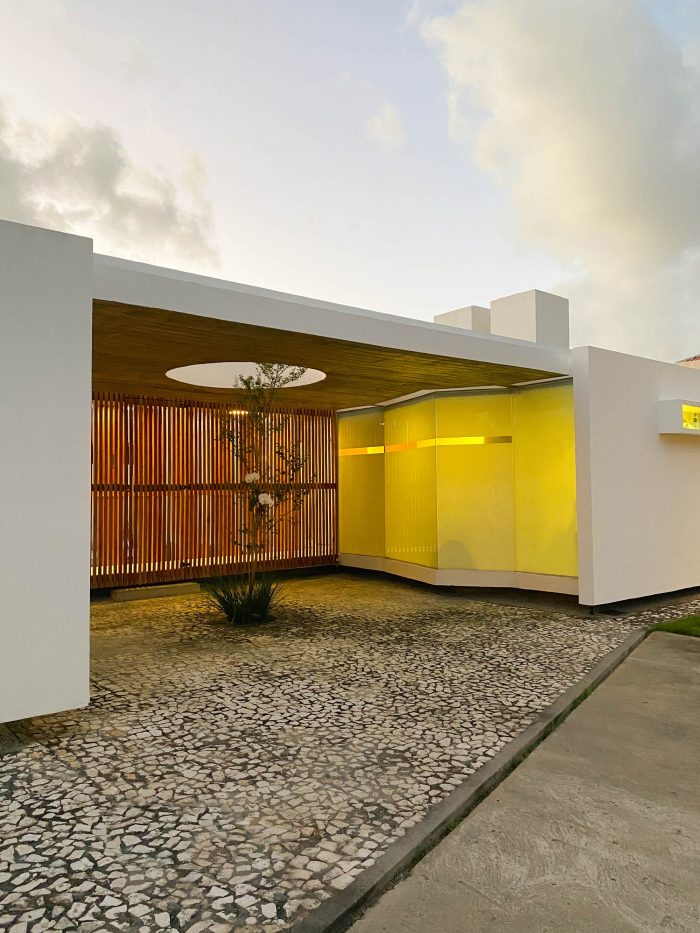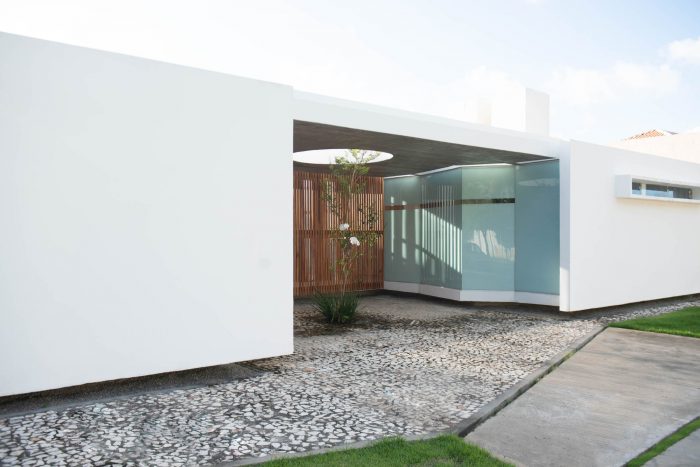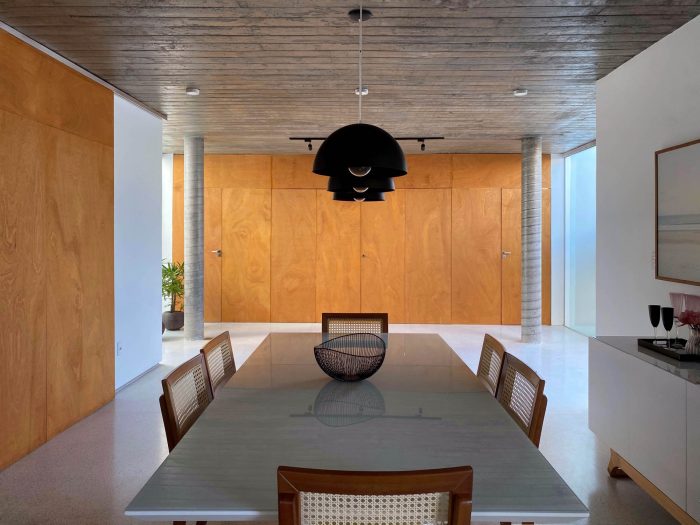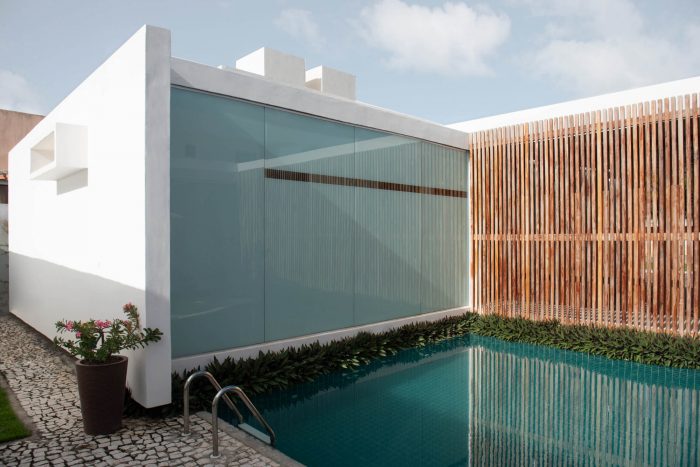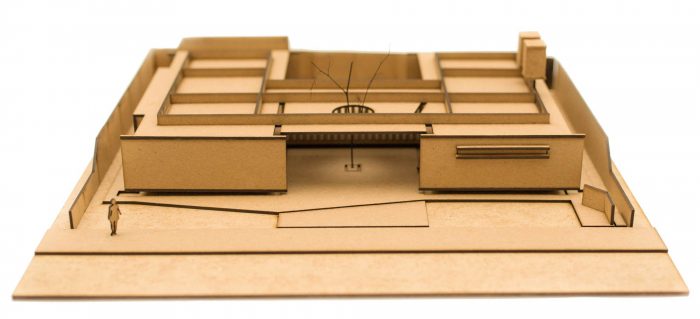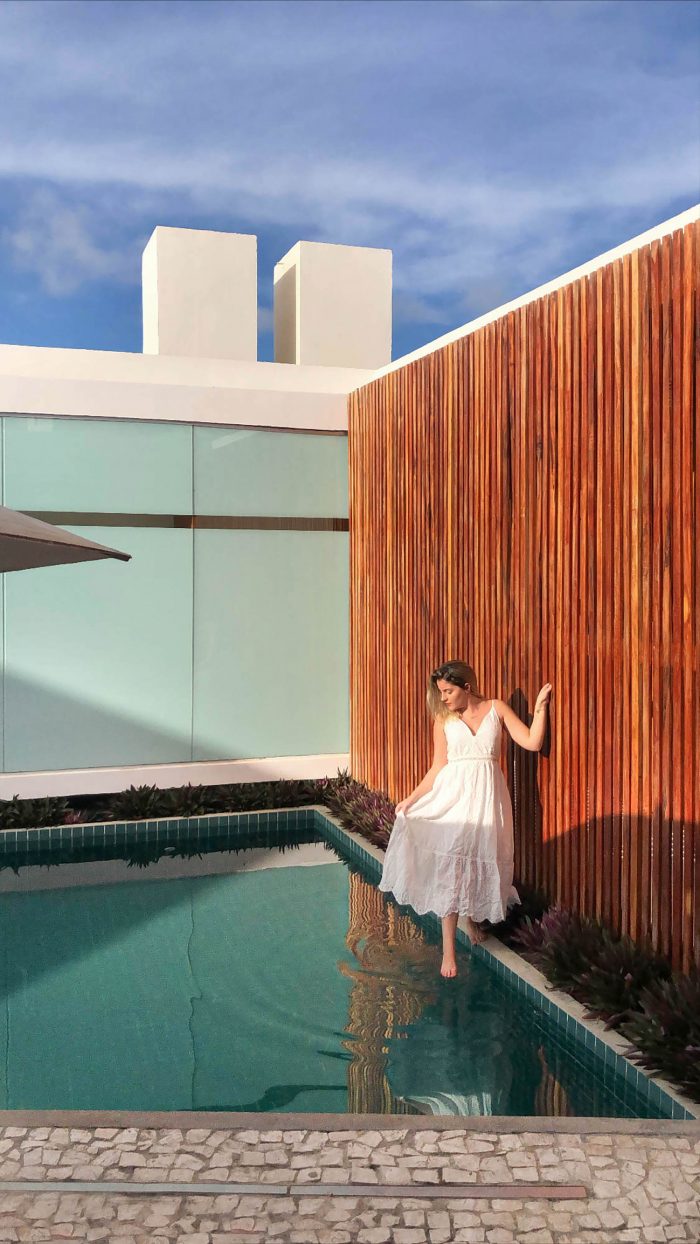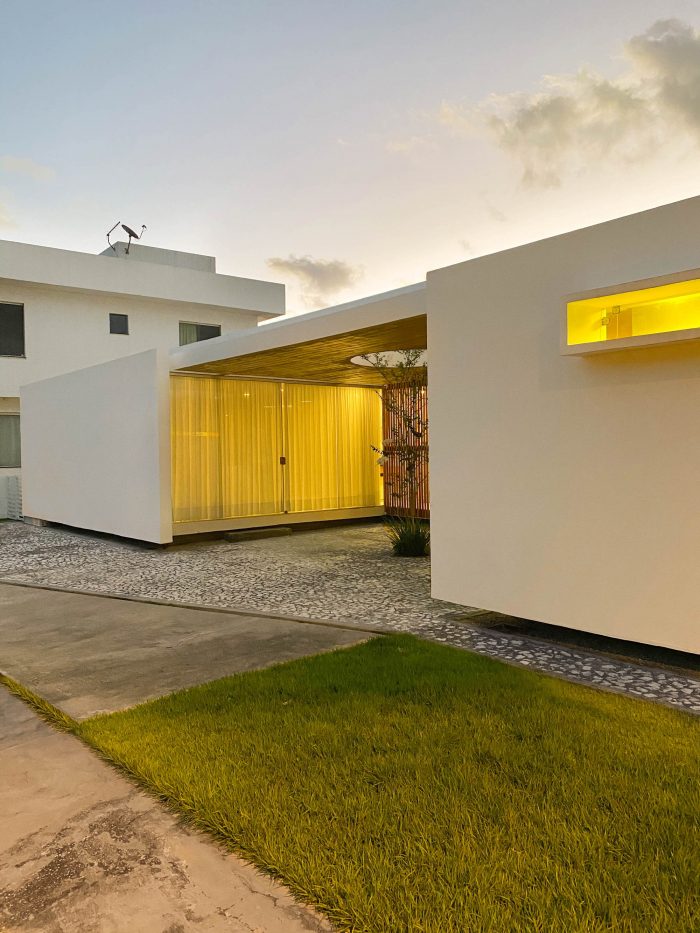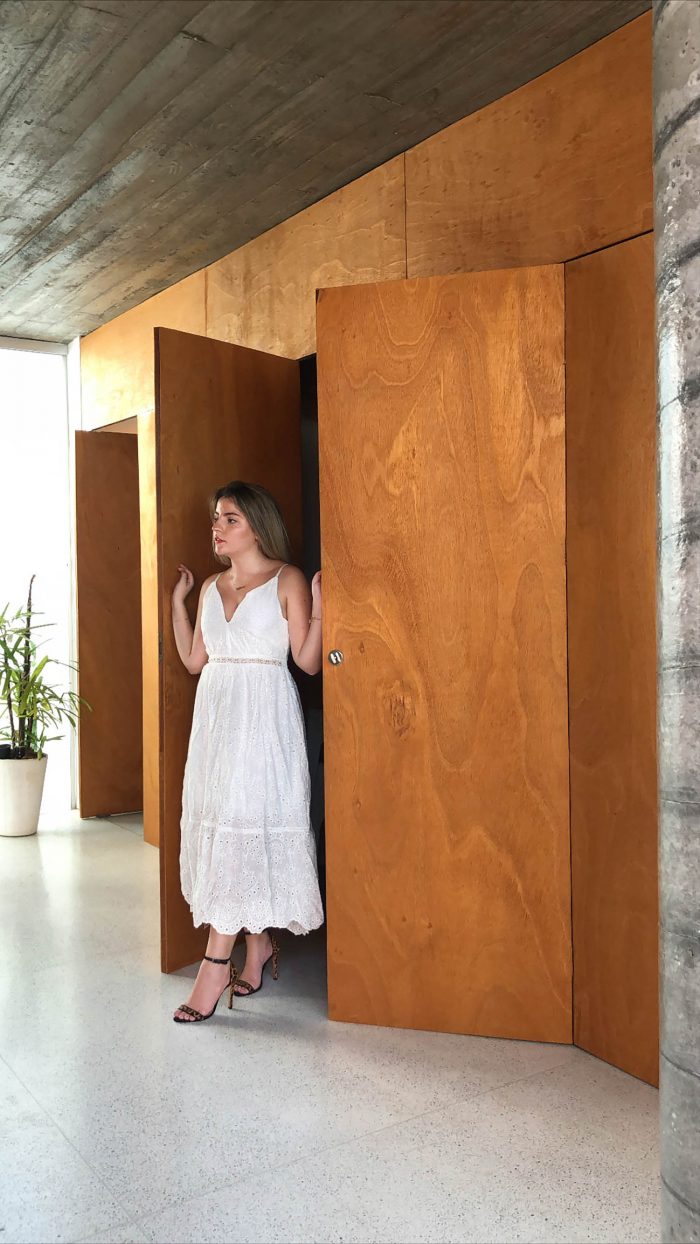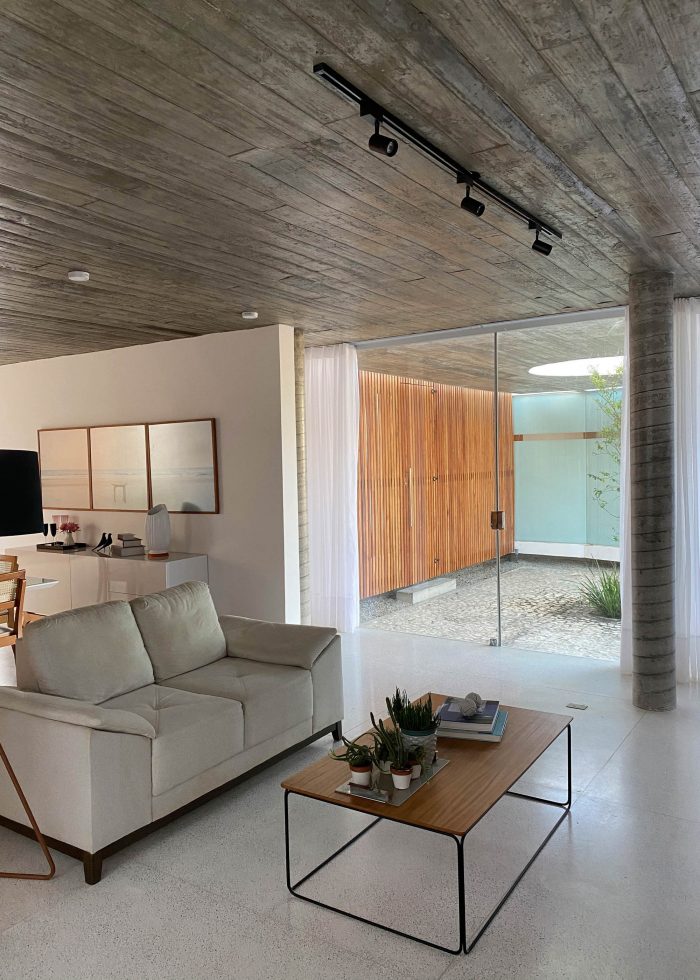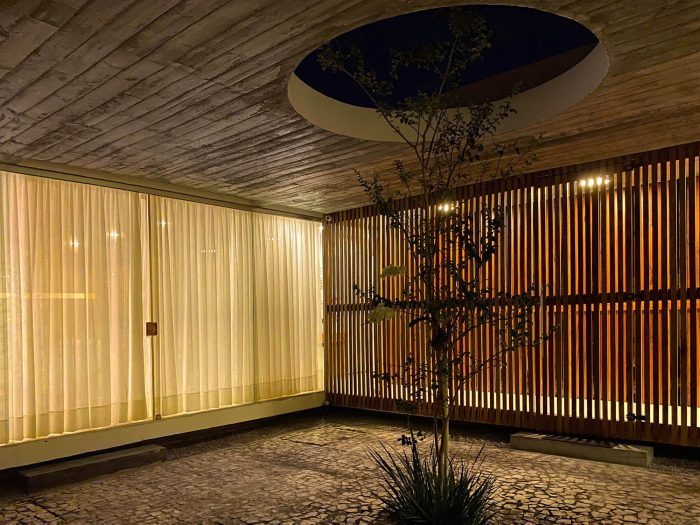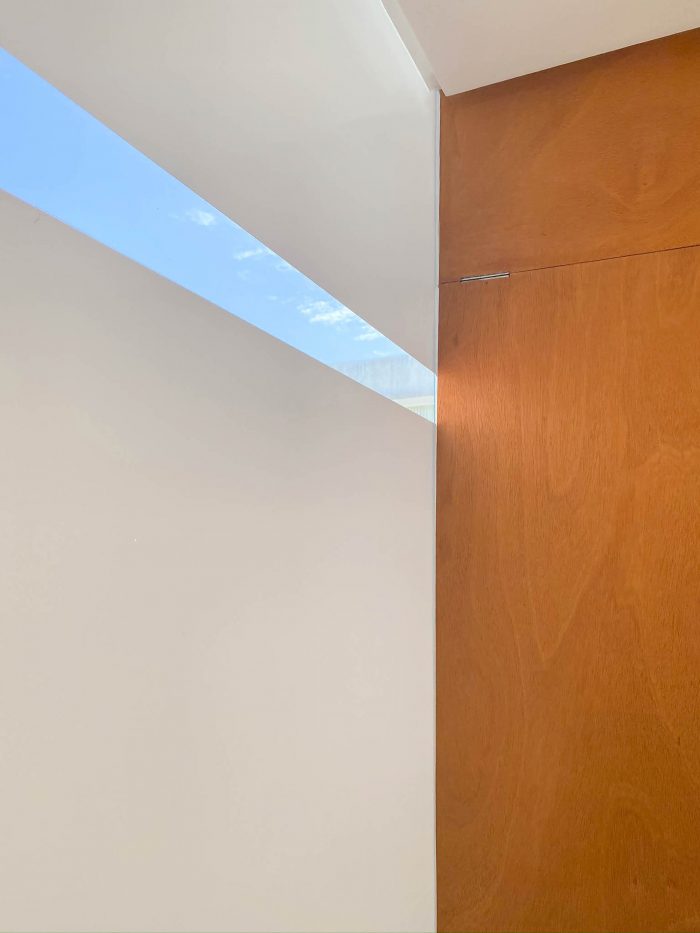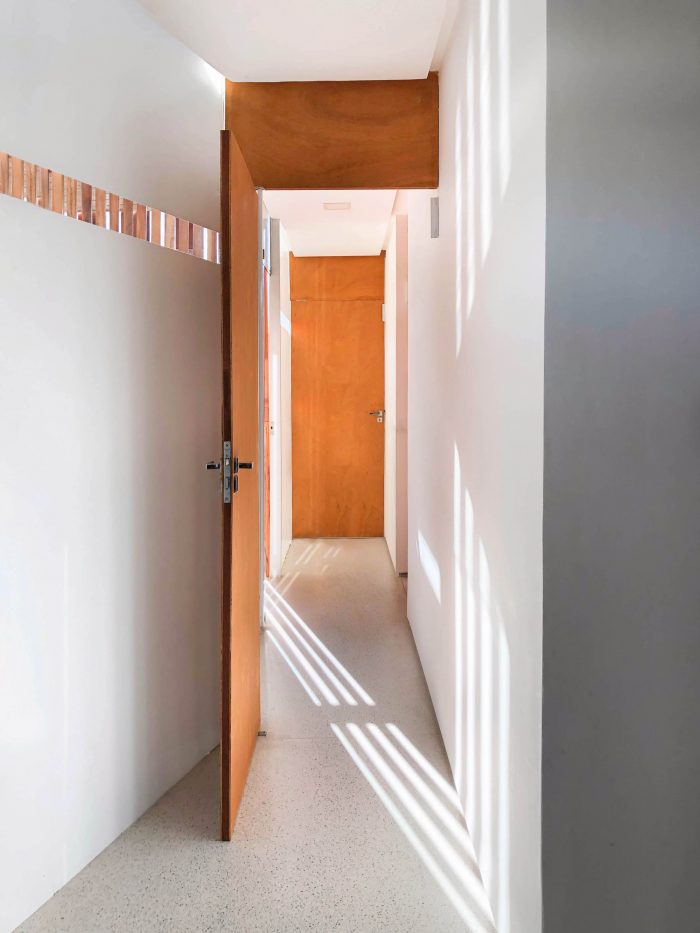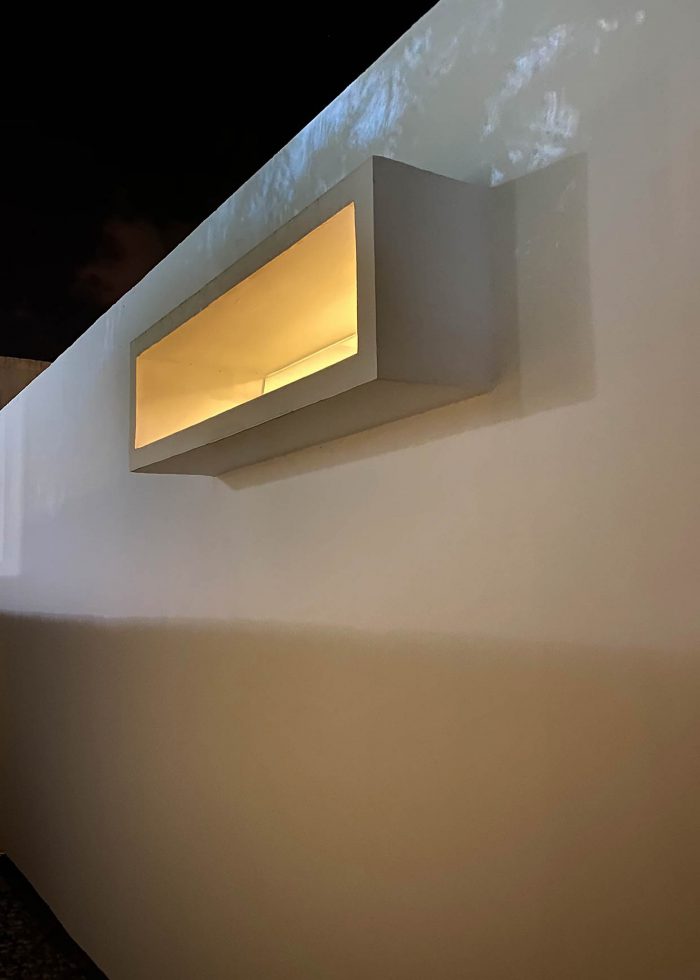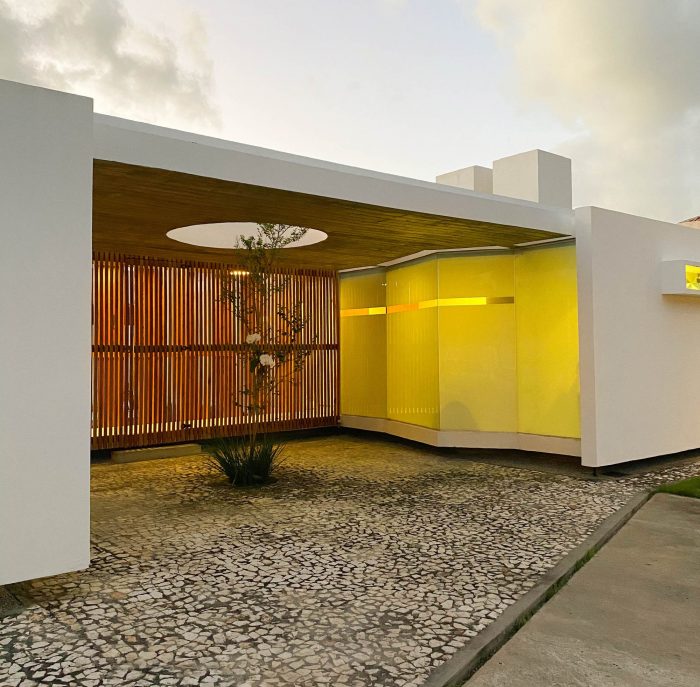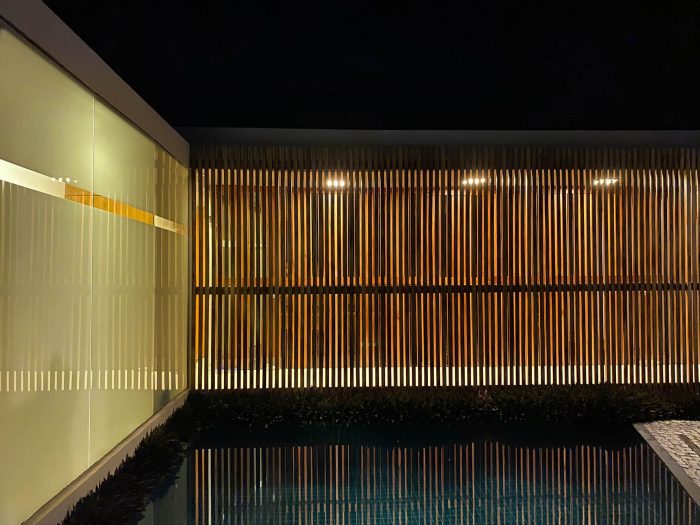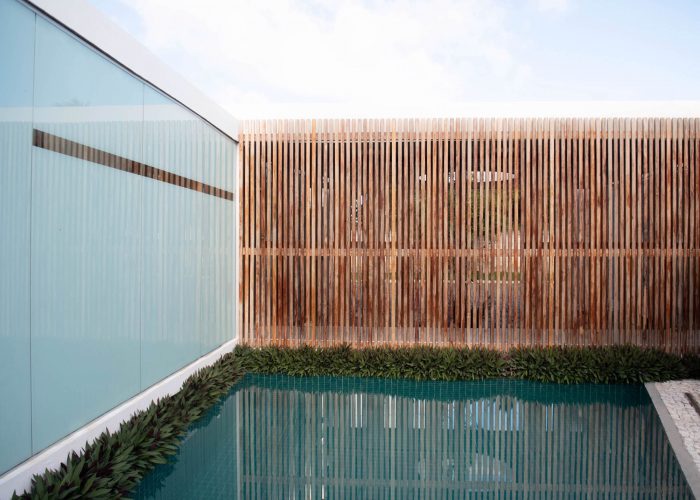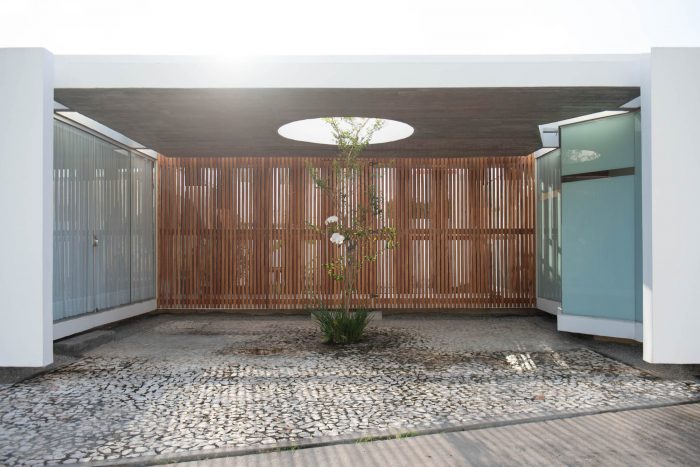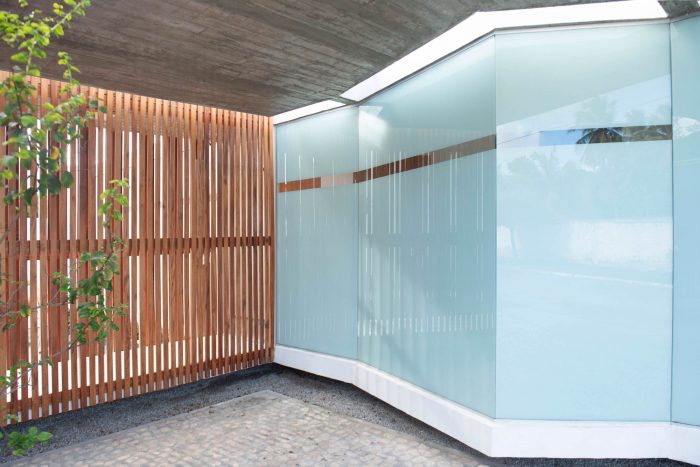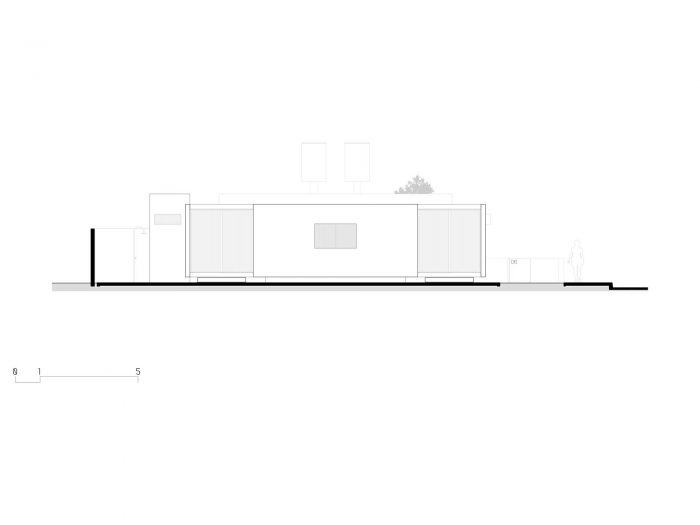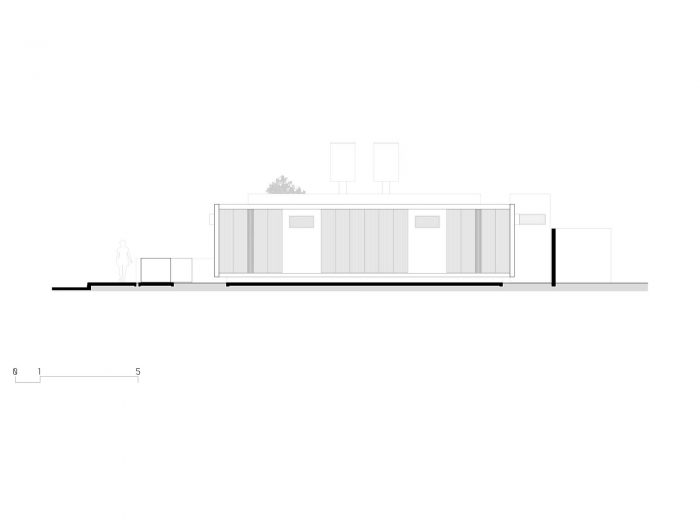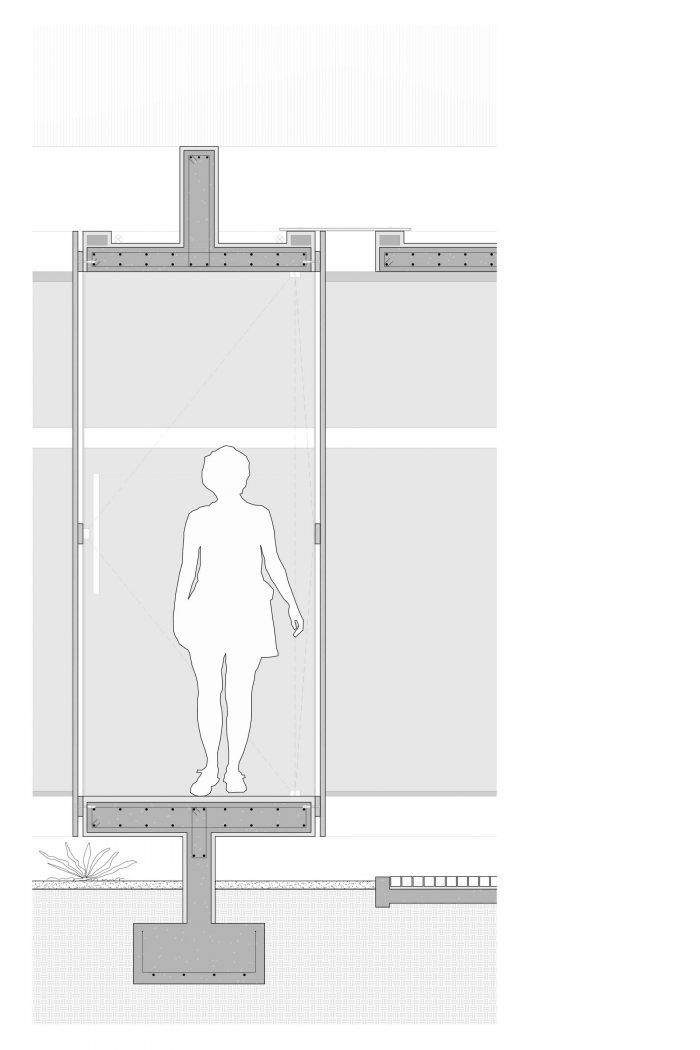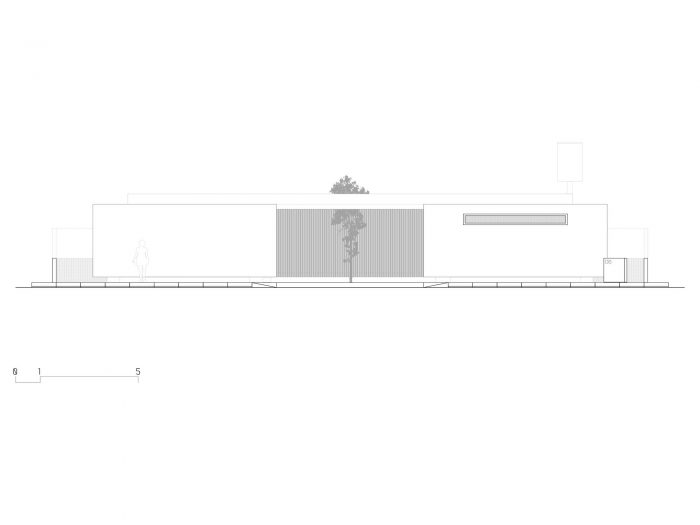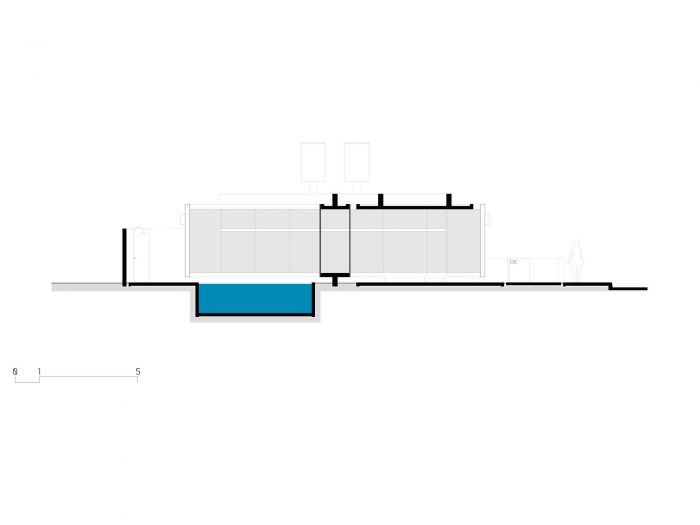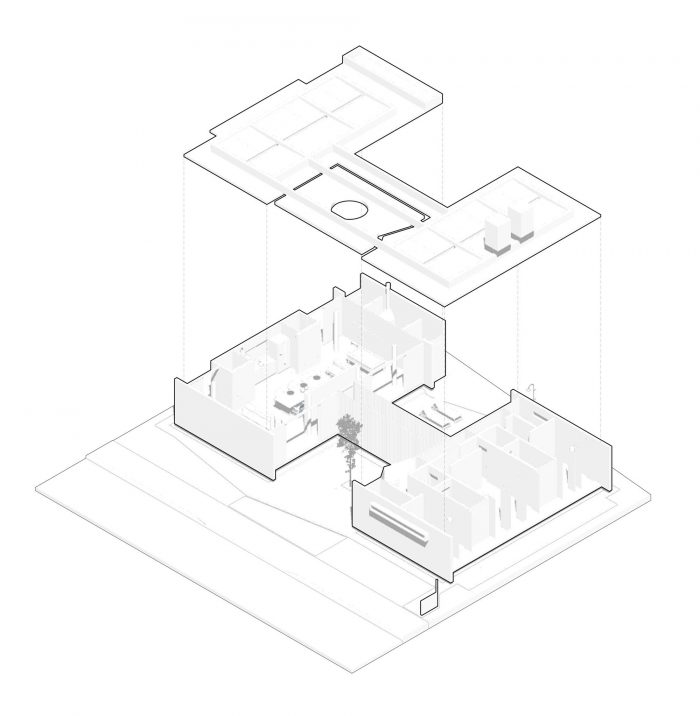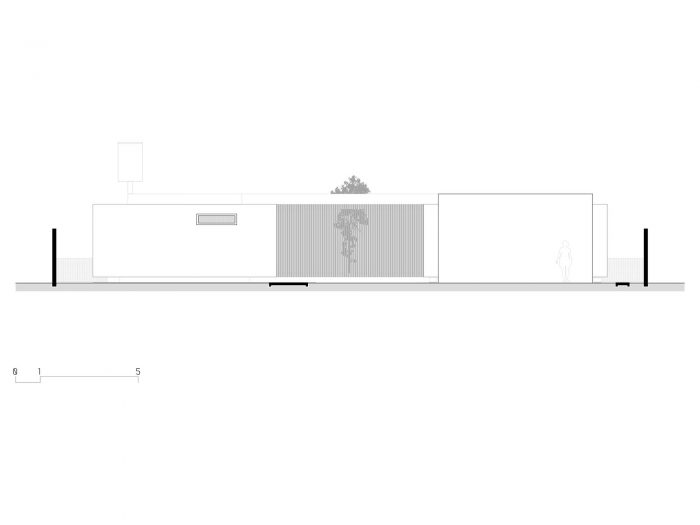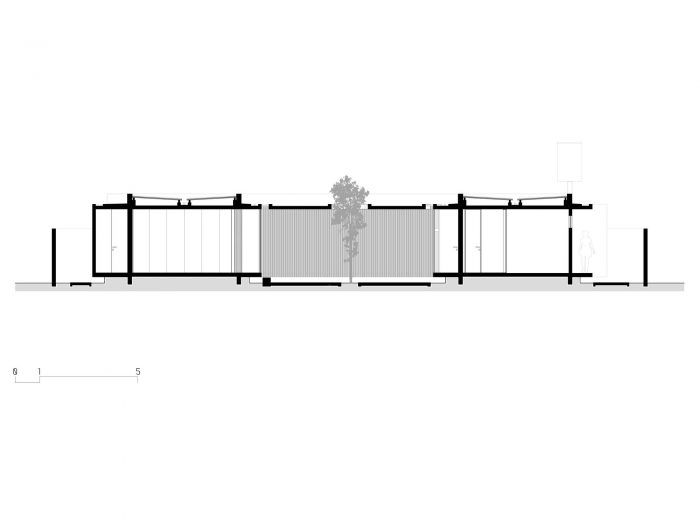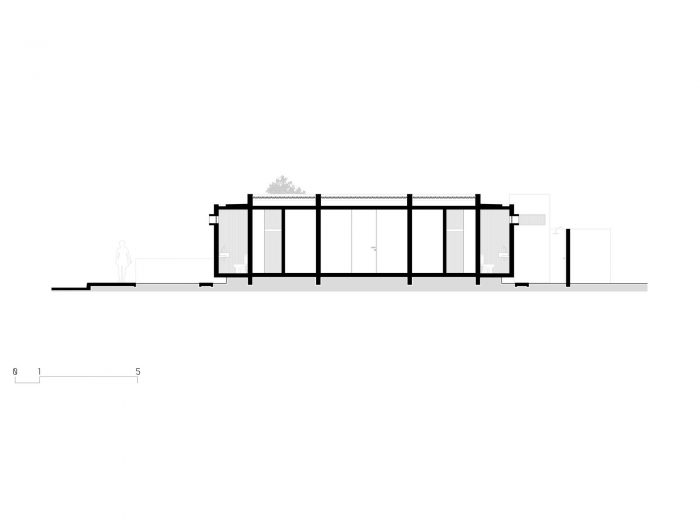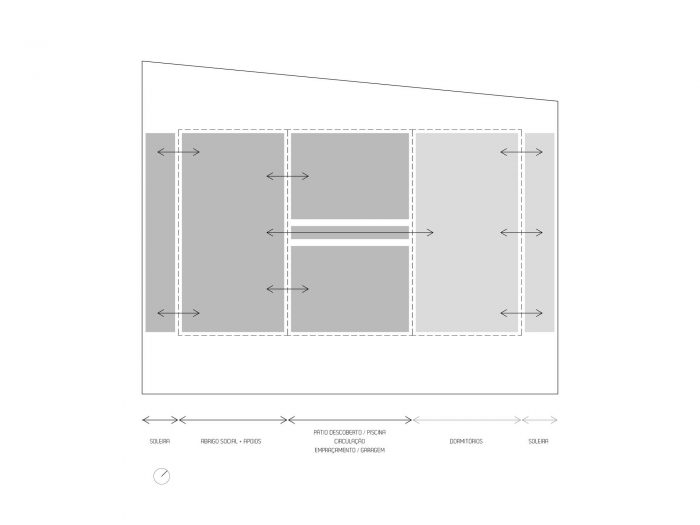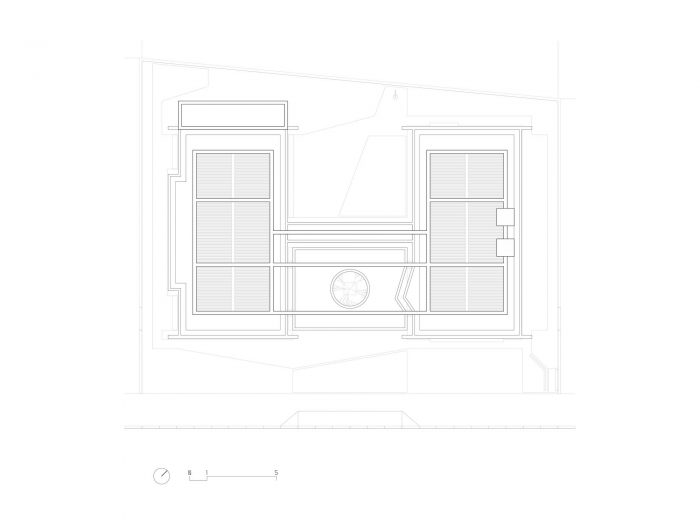这座房子是为一块土地设计的,它的尺寸和轮廓与位于巴西阿拉卡茹海滩地区的住宅群的其他房产的典型几何形状非常不同。这座房子依靠一个简化的设计,平衡了概念设计过程中的各种影响和情况。建筑方案沿着三个部分分布,在门槛之间突出,沿着地段的最长的水平轴。因此,第一部分在空间和视觉上与其相邻的门槛以及中央区域相关,并提供了一个更密集的社会活动场所。第三部分,由卧室组成,更多的保留空间,直接连接到沿着它的门槛。
This house was designed for a plot of land that has sizes and outlines very different from the typical geometry of the other properties of the residential complex located in the beach area of Aracaju, Brazil. The house relies on a simplified design that balances the various influences and circumstances established during the conceptual process. The architectural program is distributed along three sections highlighted between thresholds, along the lengthiest, horizontal axis of the lot. Accordingly, the first section is spatially and visually related to its adjacent threshold, as well as to the central area, and provides a place for more intense social activities. The third section, composed of bedrooms, more reserved spaces, is directly attached to the threshold that goes along it.
中央部分的特点是空旷,这使得外墙和从东边和东南边吹来的风之间有更大的接触面积。在中间,又有一个分区,从建筑的正前方开始,是一个掩饰自己的车库,在没有汽车的情况下,变成了一个更加温馨的庭院;接下来,由木制遮阳板覆盖的走道部分地揭示了隐藏在缝隙之间的东西,并为背面提供交叉通风;在后面,一个开放的庭院连接了游泳池和大客厅空间。
The central section is marked by emptiness, which allows for greater contact area between the facades and the winds blowing from the east and southeast. In the middle, there is yet another division, starting right in front of the building, a garage that camouflages itself, and in the absence of cars, turns into an even more welcoming courtyard; following, a walkway covered by wooden sun baffles partially reveals what is hidden between the gaps and provides cross-ventilation to the backside; at the back, an open patio connects the swimming pool with the large living room space.
建筑概念与混凝土结构草图同时进行,通过将建筑从地面抬起来,形成更轻的体积,并为水箱提供更微妙的设计。总的来说,整个房屋空间被设置在两块坚实的混凝土板之间,其横梁面向外部部分。
The architectural concept works alongside the concrete structure sketching, resulting in lighter volumes by lifting the building from the ground and providing a more subtle design for the water tanks. Overall, the entire house space is set between two solid concrete slabs, with their beams facing the external parts.
水箱被放置在中央卧室的一个边梁上,非常接近跨度的中间。为了保持材料的真实性,实现自然的建筑和美学,这个大部分是白色的房子还采用了木头和玻璃墙,葡萄牙石灰石铺设,水磨石地板,以及原始的混凝土柱子和板块。可以说,这种建筑是以某种逻辑为标志的,它通过一系列的研究或调查,在了解地方、人、环境和建筑技术的同时揭示了自己。它有某种持久性的意图……通过接地气的简单事实。
The water tanks are placed over one of the edge beams in the central bedroom, very close to the middle of the span. To preserve the authenticity of the materials and achieve natural architecture and aesthetics, the mostly white house also features wood and glass walls, Portuguese limestone paving, terrazzo flooring, and raw concrete pillars and slabs. One can say that this architecture is marked by a certain logic that reveals itself through a series of studies or researches while knowing the place, the people, the circumstances, and the building techniques. It has a certain intention of being long-lasting… by the simple fact of being grounded.
Architects: Cidadela Arquitetos
Area: 215 m²
Year: 2020
Photographs: Fernanda Passos
Manufacturers: AutoDesk, Blindex, Casa das pedras, Cristallux, Deca, Dimibu, Diviart, FM Mix, Hiper Ferragens J Alves, Marmoraria Sergipe, Passos Portas, Revest vidro, Terminox, Tramontina, Trimble
Lead Engineers:Ítalo Motta, Fernanda Passos
Structural Engineering:José Francisco de Castro Serra
Plumbing And Drainage Engineering:Adriano Gonçalves dos Anjos Oliveira
Electrical Engineering And Structured Cabling:Henrique Santos Ribeiro
Collaborating Contractors:José Roberto Santos Souza, Francisco de Souza
City:Aruana
Country:Brazil

